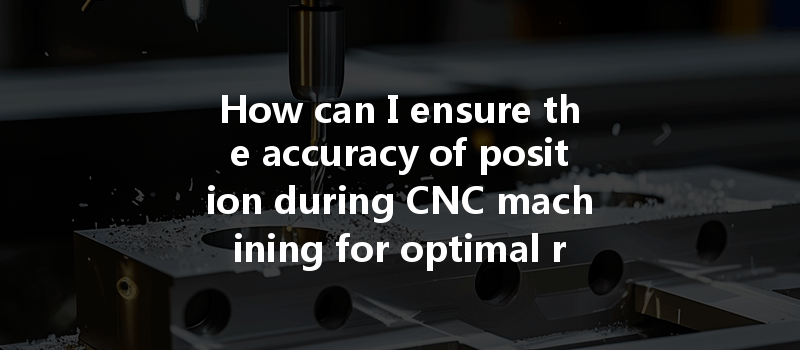In today’s precision-driven manufacturing landscape, CNC (Computer Numerical Control) machining stands as a cornerstone of productivity and accuracy. Did you know that CNC machining can achieve tolerances as tight as ±0.001 inches? Such precision is crucial across a variety of industries—ranging from aerospace to medical devices—where even the smallest measurement discrepancies can lead to significant failures or malfunctions. Given the rapid advancements in technology and the growing demand for high-quality components, ensuring the accuracy of positioning during CNC machining is more important than ever.
Understanding CNC Machining Accuracy
CNC machining turns a digital file into a physical component through a set of automated operations performed by machines. However, the accuracy of these operations hinges on multiple factors, including machine calibration, tool selection, material properties, and environmental conditions. Let’s explore some of the core strategies and technologies necessary to achieve optimal positioning accuracy in CNC machining.
Key Factors Affecting Accuracy in CNC Machining
Regular calibration of CNC machines is imperative. Even the best machines can drift over time, leading to inaccuracies. Calibration involves adjusting the machine’s movement to correct any discrepancies and ensure that the movements align with the defined digital coordinates. Scheduled maintenance of components like motors, gears, and sensors also contributes to improved reliability.
Using advanced measurement tools, such as laser interferometers and electronic dial indicators, can help validate the precision of CNC machines. These tools allow operators to measure the machine’s actual performance against its programmed paths, identifying discrepancies that may affect outcome quality.
The type of tooling used can greatly influence the accuracy of machining operations. Choosing the appropriate cutting tools, such as end mills, drills, or inserts, based on the material being machined is critical. Additionally, employing adaptive toolpath strategies can help optimize cutting speeds and feeds, reducing tool wear and improving consistency.
Different materials respond uniquely to machining processes. Factors such as thermal expansion, hardness, and machinability must be considered. Using materials with consistent properties will reduce variations during machining, leading to better positional accuracy.
The software employed to generate CNC programs significantly impacts accuracy. High-quality CAM (Computer-Aided Manufacturing) software can create efficient toolpaths that minimize waste and reduce the potential for error. Furthermore, simulating operations digitally allows for identifying potential issues before physical machining begins.
Properly securing the workpiece is essential for maintaining positional accuracy throughout the machining process. The use of vises, clamps, or specialized fixtures ensures that the material does not move or flex as it is machined. Advanced workholding solutions such as vacuum systems or magnetic clamps can also provide additional stability.
The environment in which CNC machining takes place can affect the accuracy of the processes due to factors like temperature fluctuations or vibrations. Utilizing temperature-controlled rooms and isolating machines from vibrations can help maintain overall accuracy.

Operators play a crucial role in the accuracy of CNC machining. Trained professionals who understand the intricacies of machine operation, setup, and troubleshooting can ensure effective and precise machining. Continuous education and training in the latest CNC technologies and best practices will empower operators to make informed decisions and execute precise machining tasks effectively.
Advanced Technologies to Enhance Accuracy
To elevate the accuracy of CNC machining, several cutting-edge technologies can be employed:
Integrating software that provides real-time monitoring of machining conditions can help to detect and address errors as they occur. These systems often include feedback loops that alert operators when the machine deviates from its intended path, allowing for quick adjustments.
Artificial Intelligence can analyze vast amounts of data to predict potential machining errors before they occur. Machine learning algorithms can recommend adjustments based on both historical data and real-time feedback, leading to enhanced accuracy and reduced idle time.
These systems automatically adjust machining parameters in real-time based on feedback from the machining process. For example, if the machine encounters a harder-than-expected material, the system can alter the feed rate to maintain accuracy.
Upgrading CNC machines with high-precision linear guides can enhance the positioning of the cutting tool. These components reduce friction and ensure smoother, more precise movements.
Implementing encoders and linear scales can help verify the position of axes in real-time. These systems can track the actual position of the machine tool compared to the commanded position, allowing for immediate corrective action if any deviations are detected.
Achieving optimal positional accuracy in CNC machining is vital in today’s competitive manufacturing environment. By embracing a holistic approach that includes meticulous machine calibration, precise tool selection, environment control, and state-of-the-art technologies, manufacturers can ensure unparalleled accuracy in their machining operations.
Understanding the intricacies of CNC machining—the factors influencing accuracy and the advanced technologies at hand—will empower professionals to produce high-quality components and meet the growing demands of their industries. As technology continues to advance, staying updated on best practices and innovations will be paramount for any machining business seeking to thrive.
In a world where precision is not just a luxury but often a necessity, investing in the methods that ensure accuracy in CNC machining can spell the difference between success and costly errors. By focusing on these areas, readers can appreciate the importance of maintaining exacting standards in their machining operations and be equipped with effective strategies for achieving optimal results.
Whether you’re an operator, engineer, or decision-maker in a manufacturing firm, understanding how to ensure accuracy in CNC machining is invaluable. Remember, a commitment to precision in every step of the process can drastically improve product quality, productivity, and customer satisfaction.






